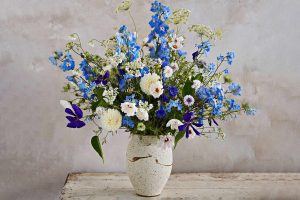Fashion And Evolution Of Dressing Styles
Sarees have been in existence ever since the evolution of the Indus valley civilization. Several mentions of this unstitched long piece of cloth have been found in early Buddhist, Jain, and Sanskrit scriptures as ‘swastika,’which later on came to be known as ‘sari.’ Dhoti later came into the limelight of the world’s attention due to the contribution of Mahatma Gandhi. He often wore dhoti made from yarn; he spun himself and encouraged people to do the same.
What makes the traditional clothing of Bihar different from the rest of the Indian states?
Sarees or kurtas are indeed worn popularly in many more Indian states, but what makes Bihar traditional dress different from others are the following unique points:
Muretha or Gumccha
No dhoti-kurta is complete in Bihar until it is paired with a muretha or a gumccha! In simple words, muretha is a headgear that looks similar to a turban but is different due to the way of wearing it and its purpose. On the other hand, if the man is not wearing a muretha, there must be a piece of unstitched rectangular clothing hanging around his neck. This piece of cloth is known as ‘gumccha.’ In different parts of Bihar, gumccha is worn differently.
Saree
Although in modern times, sarees in Bihar are worn along with a blouse, such was not exist in the early times. Women used to wear saree in their true form, that is, only a single piece of cloth draped around the body, leaving only a few body parts such as the face, feet, and waist exposed. Women often kept the ‘pallu’ of the saree above their heads to signify respect and grace. Other than wearing a saree without a blouse or any other additional piece of clothing. In Bihar, a traditional saree is always worn with a ‘seedhapallu.’ A ‘seedhapallu’ is a way of wearing the part of the saree remaining after the drape from face-front towards the back. There are different ways of taking the pallu in different states of India.
Dhoti or pajama
In Bihar, traditional dress, pajama, and kurta are often worn by younger men and boys, and the elder men wear Dhoti-kurta. Although there is no rule for wearing dhotis, it is believed that wearing a dhoti is more sacred and formal.
Several ancient runes and statues depict saree as the attire for royal as well as common women.Similarly, the statues and paintings of Kings and rulers from the North Indian subcontinent are often seen in kurtas and dhotis, accompanied by a turban.




